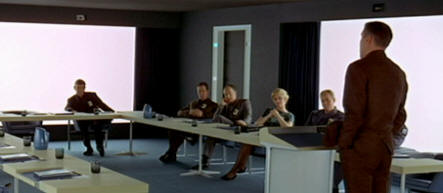
“Kubrick: and beyond the cinema frame”
An in-depth analysis of
2001: A SPACE ODYSSEY
Text copyright © by Rob Ager 2008
(last updates added 2015)
CHAPTER 7
THE MONOLITH AS A DOORWAY
The notion of the monolith as a doorway is a concept that has already been written of in many reviews, though I’ll very briefly expand on it here.
The most obvious occurrence of this metaphor is in the council meeting room where Floyd gives his speech. The photographer exits the room through a black smooth surfaced door.

Kubrick was a photographer in his youth and the photographer in this scene looks very much like a youthful Kubrick. Once again there may be an implication of Stanley as the monolith.

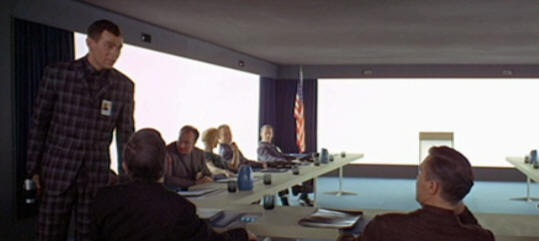
For Bowman, the realization of the cinema screen paradigm creates a doorway through which he can symbolically leave his own universe. Reborn in the enclosed renaissance room, which has no doorway, the camera assumes his point of view and moves directly into the upright monolith. In this shot the monolith acts as a doorway straight back to Bowman’s own cinematic universe. Note: his hand stretching from the bed is only a couple of inches away from touching the monolith due to the cinema screen being a two dimensional universe.
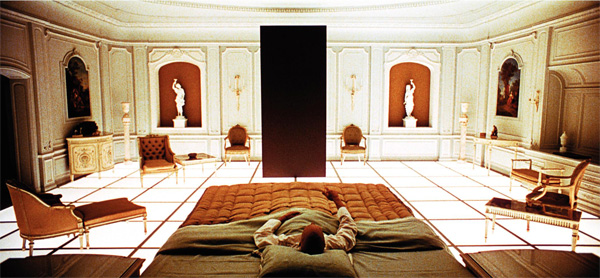
A very powerful indicator of the monolith being a cinematic doorway between the film and our own universe is demonstrated in the lunar excavation scene. Remember that this set doubles up as a metaphoric movie theatre. Pay very close attention to the content of the excavation. At one end are three sets of floodlights and what look like a few cameras on tripods. There is also a yellow machine or storage container against the wall, which is emphasized in the following screen shot.
At the other end of the excavation site we have the same set design, but the middle floodlight is missing and there is a red container instead of a yellow one.
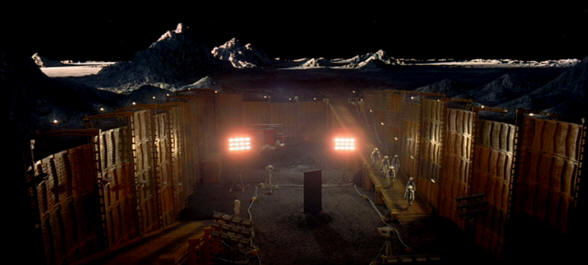
Notice also that a single bright spot light appears at the rim of the excavation in the close up shot, but is missing in the wide shot.
Watch carefully as floyd walks in a semi-circle around the monolith. He walks from right to left in the foreground and moves off screen (as shown in the screen shot above). The shot cuts and we see what appears to be a reverse angle of Floyd continuing to circle the monolith, accompanied by a sudden increase of intensity in the musical score, but look at the background.
From the red object behind Floyd, which only exists at one end of the excavation site, we can see that we are still viewing the monolith from the same side. Floyd is the one who has flipped positions, not the camera. His mirror image has emerged from the reverse side of the monolith.
The excavation site is metaphorically divided into a parallel reality so that no matter where you stand it is mirrored along the axis of the monolith. This is why there are two identical ramps and almost every detail is the same on both sides, except the missing floodlight and red / yellow machines or containers. The monolith is a doorway between two parallel universes.
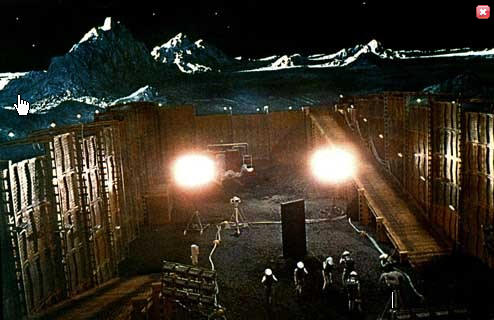
Of course this raises the question as to why the astonauts can't see themselves reflected on the other side of the pit, but that's a question we'll return to later in this review.